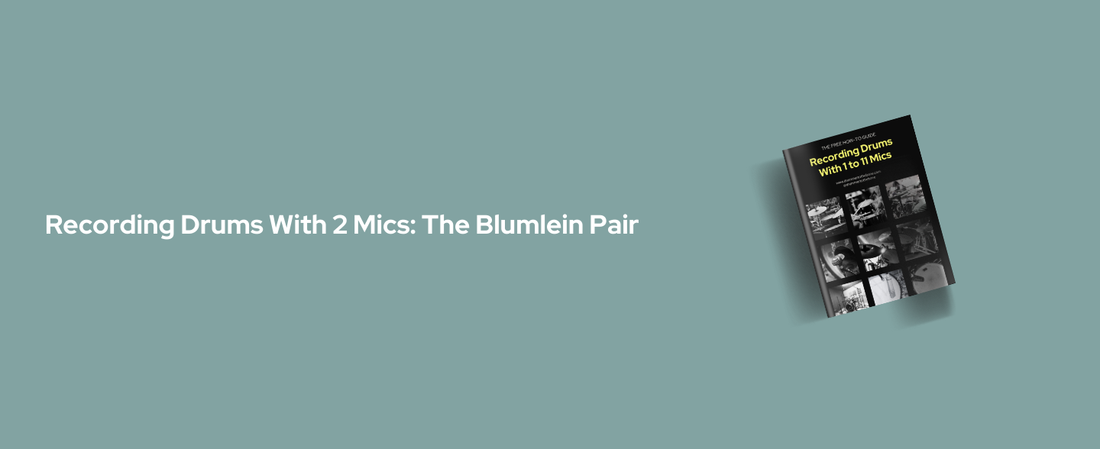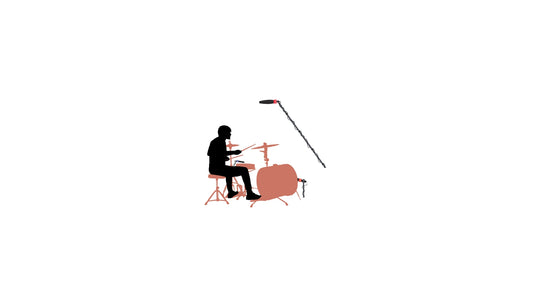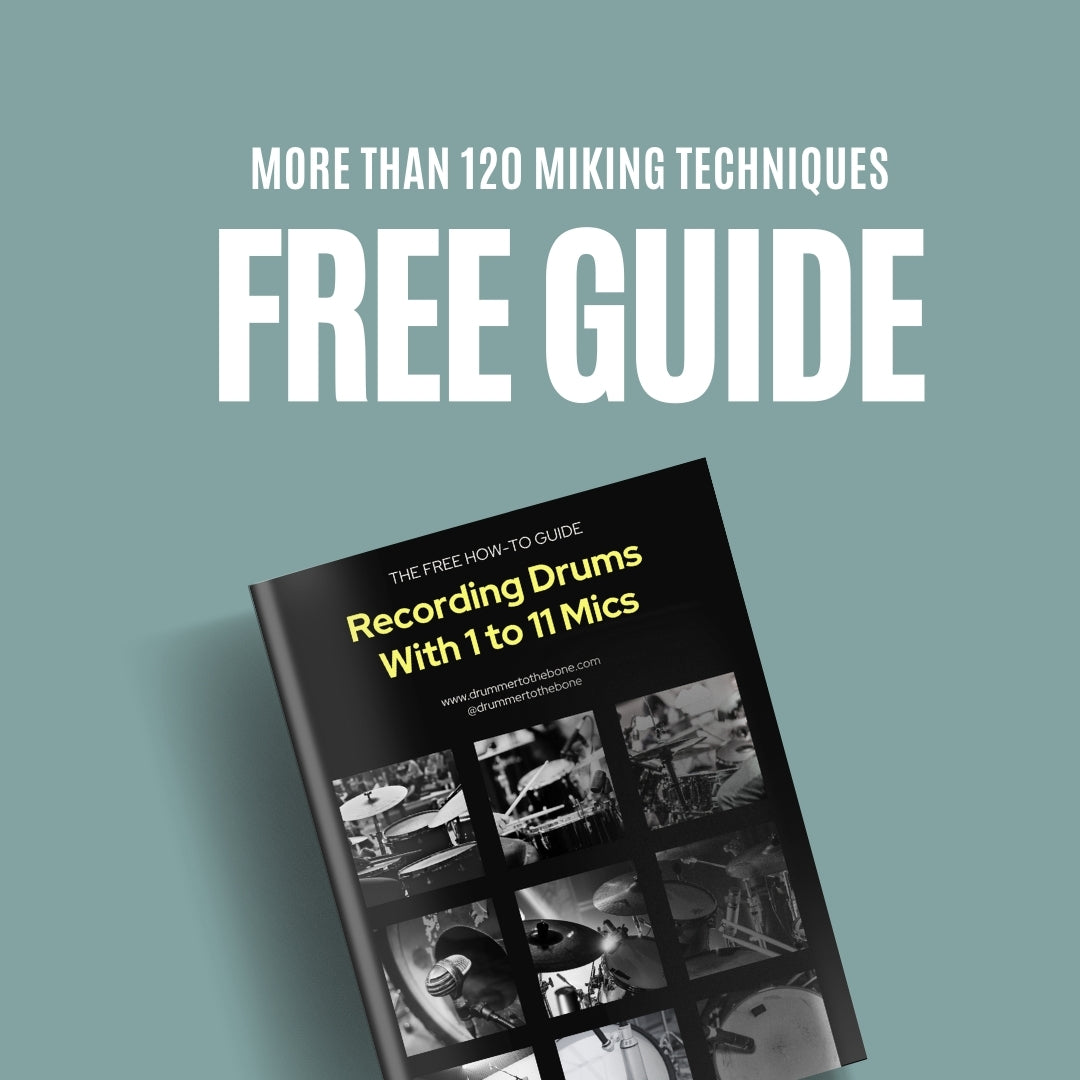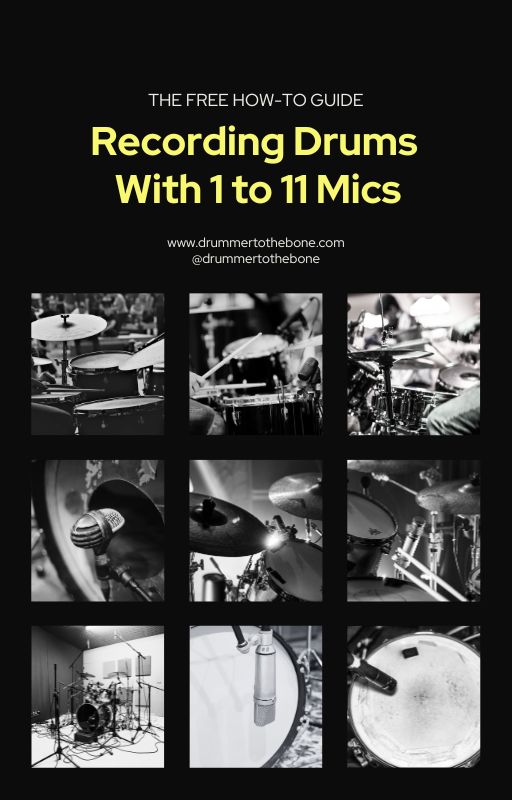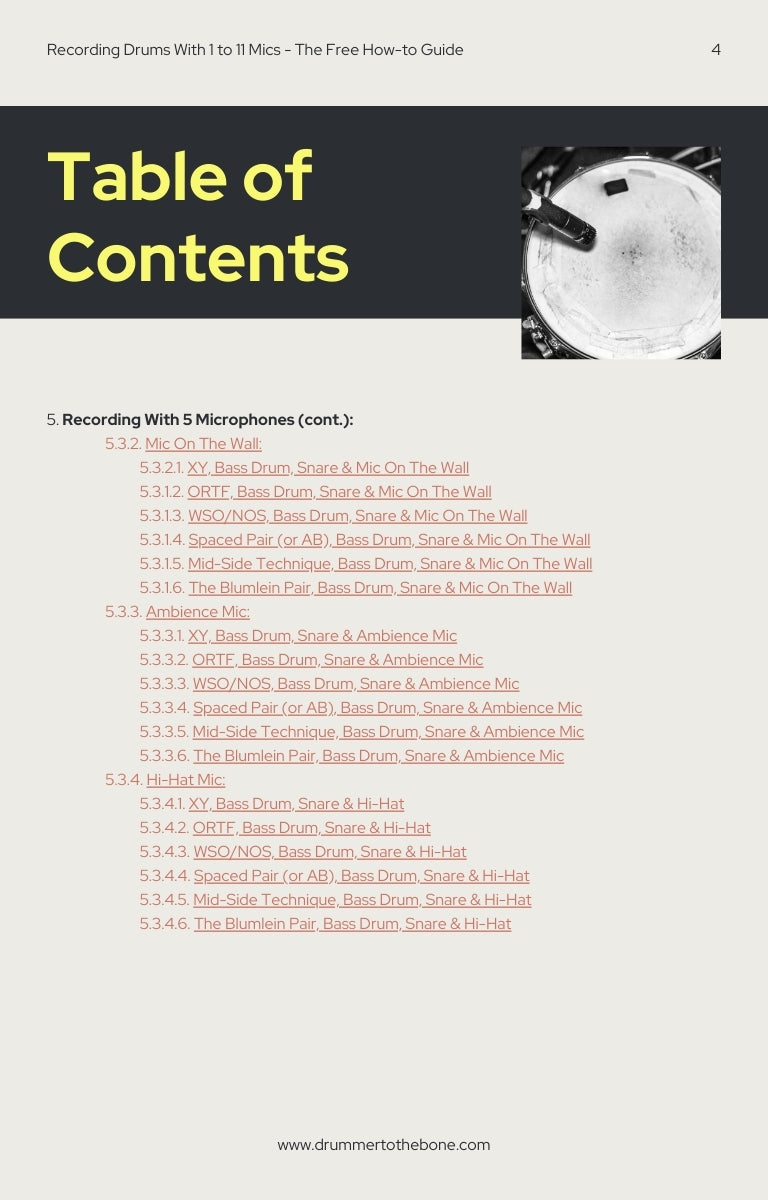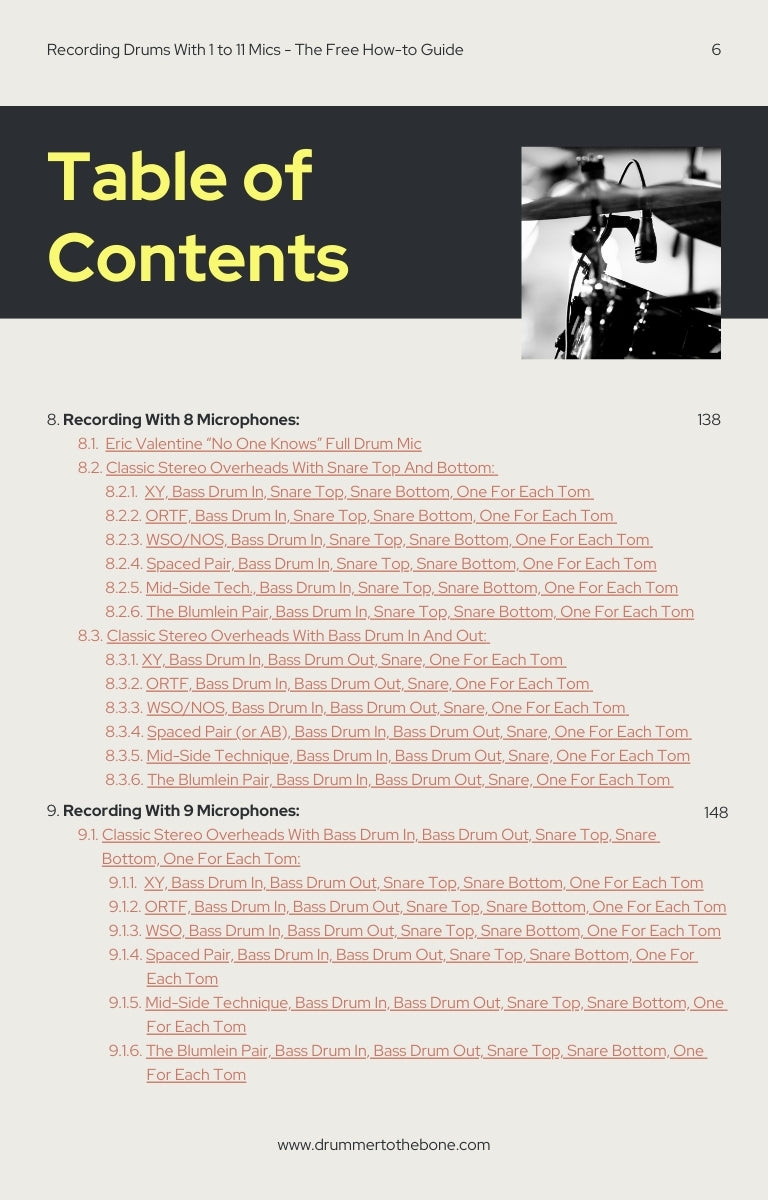This technique uses the same set up as an X-Y but with ribbon microphones, typically angled at 90°. The back lobe of the bidirectional microphones captures room reverberation and offers a sense of depth that the X-Y setup cannot provide, while offering a clear sense of direction and a stable sense center of image.
Don’t go too high towards the ceiling, since reflections from the ceiling into the rear of the mic will cause phase-cancellation problems.

As with the X-Y, mono compatibility is excellent, but the lack of phase can make it sound tight—so, not a big stereo spread. Having said that, many engineers use this technique to get a “roomy” sound without compromising potential phase issues. For this place a Blumlein pair in front of the drum kit, positioned anywhere from 4 feet up to 25 feet away from the kit, depending on how much room tone they’re looking for.
Pros of this approach:
- Given that you’re using ribbon mics, the accuracy and capability of these mics to pick up the room is great.
- Super versatile technique, since you can put it in front of the kit, a few feet from it, to pick up ambience in every direction.
- Great complimentary room mic technique to the others.
- Easy to set up.
Cons:
- Ribbon mics are expensive. No way around that.
- Ribbon mics tend to be more sensitive than other mics, so handle them with care.
- Positioning and room are key. The better the room, the better it will sound. On the contrary, bad room, not-so-good sound.

